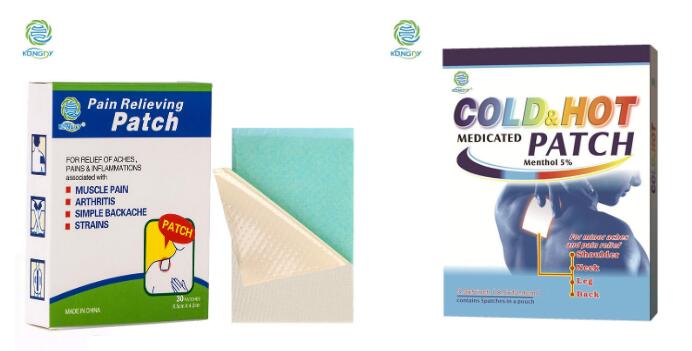Prescription pain patches are an alternative to oral pain pills and injections. According to Johns Hopkins Medicine, the patches help prevent side effects such as gastrointestinal difficulties and internal bleeding that sometimes result from taking pills. Pain patches provide more consistent pain relief than other forms of medication but can have complications, such as unintentional overdose.

Fentanyl Patches
Fentanyl is a narcotic pain reliever that doctors commonly use to treat chronic pain. According to the Mayo Clinic, fentanyl works through the central nervous system to provide long-term pain relief. Because it is a narcotic, fentanyl can be addictive. If you have chronic pain, however, you may prefer to use the medication because of its effectiveness without regard to the physical dependency it can create. The medication is only available with a doctor's prescription, and your health care provider should monitor continued use. You can avoid severe withdrawal symptoms by following a measured reduction.
Transdermal fentanyl patches
Transdermal fentanyl patches are only for use on your skin. They come prepackaged, and you should remove them from the sealed package only when you're ready to use them. Place the patch on a clean, dry area of the skin on your chest, upper arm, or back. Side effects of the drug include hallucinations and reduced or increased urine production. Other side effects include mood changes, fainting, chest pain, and redness at the site of the patch.
Lidocaine patches numb your skin in the area where you place the patch. According to the American Cancer Society, lidocaine patches are local anesthetics that doctors commonly use to treat tingling, burning, or stinging pain—for example, the pain you may experience if you develop the inflammatory nerve condition known as shingles. Lidocaine patches may interact with other drugs, especially those used to treat heart conditions. Pregnant women should also avoid using lidocaine patches.
Apply the sticky patch to the most painful area of the skin and leave it in place 12 out of every 24 hours. You may feel burning or swelling when you apply the patch. Remove the patch if this occurs. Side effects are few with this medication but can occur if you place the patch on an open wound. Lightheadedness, vomiting or blurred vision are signs that the medication has been absorbed into your bloodstream.
Topical Anesthetics
Over-the-counter patches are available to provide pain relief for a number of conditions. According to the Mayo Clinic, you can use topical anesthetics in patch form to treat burns, insect bites, sunburn, minor cuts, and poison ivy outbreaks. They work by deadening the nerves in the skin at the site of the patch. Use OTC pain patches only on small areas of skin, and never apply them to an open wound.
You should check with your doctor if you suspect infection or experience fever or other serious complications. Side effects of topical anesthetics most commonly include swelling and redness after application. Removing the patch usually clears these adverse reactions. Less common side effects include headaches, anxiety, drowsiness, or sweating.

